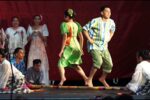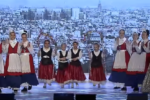What country does Mapouka dance ?
Mapouka dance is a traditional dance style that originated in the Ivory Coast, which is a country located in West Africa.It is often referred to as “la danse du fessier” or “the dance of the behind”. Mapouka is considered to be one of the original sources of “twerking”, which is now a popular dance type globally. The dance has been modernized over time, but its roots can be traced back to the cultural practices of the Aizi, Alladian, and Avikam communities. The influence of Mapouka can be seen in the creation and development of the twerking dance style.
When was the Mapouka dance created?
According to the cultural history of Ivory
Costumes used in the Mapouka dance:
There is no particular costume that needs to be worn while performing this dance form.
Music involved in the Mapouka dance:
Percussion instruments mainly drums (i.e. talking drum) are mostly used in this dance form.
Training availability and the technique involved in the Mapouka dance:
In terms of technique, this dance involves vigorous shaking of the hips. In addition, the performer also needs to maintain a slightly bent posture while performing. As for training schools/


